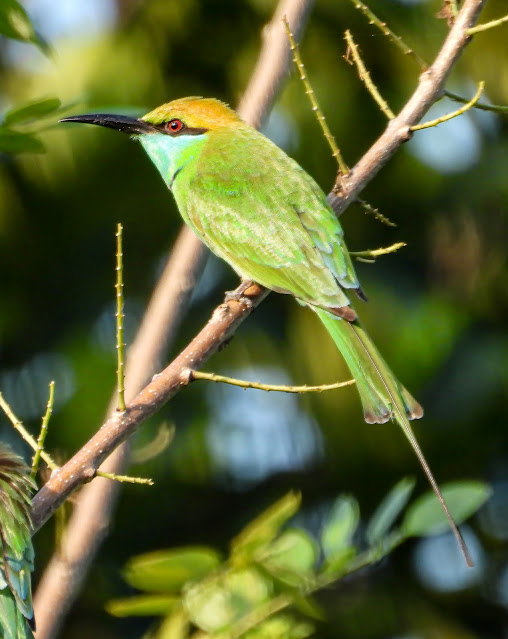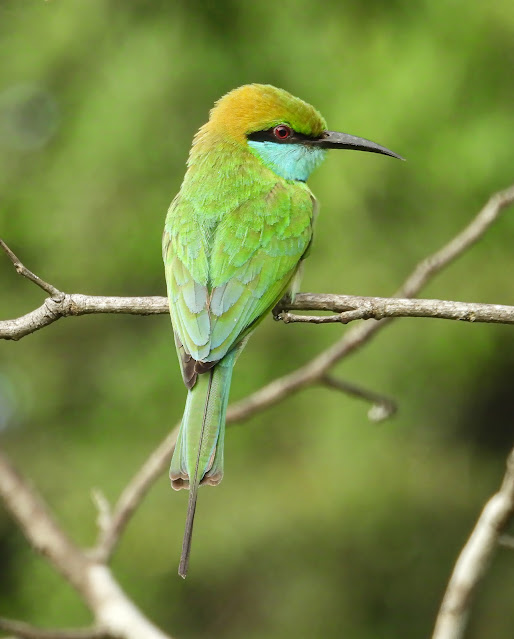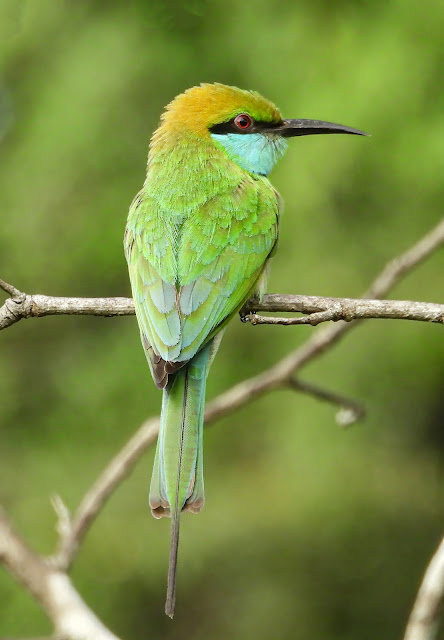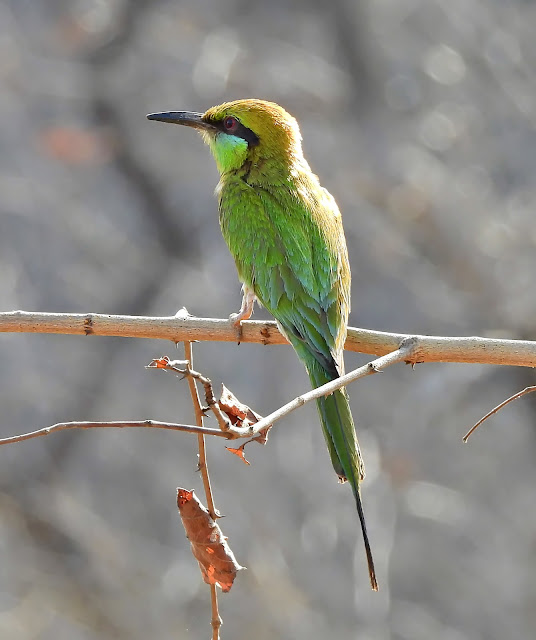The Asian green bee-eater, known scientifically as Merops orientalis, is a captivating near passerine bird belonging to the bee-eater family. This slender and brightly colored avian species measures approximately 9 inches in length, with the elongated central tail-feathers contributing about 2 inches to its overall size. The plumage is predominantly bright green, with a blue tinge on the chin and throat, and a golden rufous touch on the crown and upper back. The flight feathers exhibit a rufous hue mixed with green and tipped with blackish. A distinctive black line runs in front of and behind the eye, while the iris is a striking crimson. The bill is black, and the legs are a dark grey, with feet that are weak and toes that are joined at the base.
To identify the Asian green bee-eater, look for the bright green plumage with blue and golden rufous accents. The sexes appear similar and cannot be visually distinguished. Juveniles lack the elongated tail feathers seen in adults. The bird's bill is black, and the legs are dark grey. The crimson iris is a notable feature that can aid in identification.
The Asian green bee-eater is found in a variety of habitats including grasslands, thin scrub, and forests, often at a considerable distance from water bodies. It prefers open country with bushes and can adapt to different environments from arid areas in Africa and Arabia to more diverse habitats in Asia.
This species is widely distributed across Asia, from coastal southern Iran, through the Indian subcontinent, to Vietnam. It is a resident bird but exhibits seasonal movements, often moving to drier regions during the rainy season and to warmer areas in winter. In some parts of Pakistan, they are known as summer visitors.
The Asian green bee-eater is known for its insectivorous diet, predominantly consuming bees, wasps, and ants captured in mid-air from open perches. It employs a unique method of removing stings and breaking the exoskeleton of its prey before consumption. Seasonal movements are observed in response to rainfall, but true migration is not well documented. These birds are often seen in small groups and may roost communally. They exhibit a tendency to sand-bathe more frequently than other bee-eater species and occasionally bathe in water.
The call of the Asian green bee-eater is a nasal trill, sounding like "tree-tree-tree-tree," typically emitted during flight.
Breeding season spans from March to June. The Asian green bee-eater often nests solitarily, constructing tunnels in sandy banks. The nest tunnel can extend up to 5 feet in length, with 3-5 glossy white, spherical eggs laid at the end of the tunnel. Both sexes participate in incubation, and the eggs hatch asynchronously after about 14 days. Chicks fledge in 3 to 4 weeks, showing a reduction in body weight during the fledging stage.
The Asian green bee-eater feeds on flying insects, with a preference for beetles and hymenopterans, while orthopterans seem to be avoided. Occasionally, they may consume crabs. They regurgitate indigestible parts of their prey as pellets.
The IUCN Red List classifies the Asian green bee-eater as Least Concern, indicating that the species does not currently face a significant risk of extinction.


















%2012.jpg)



